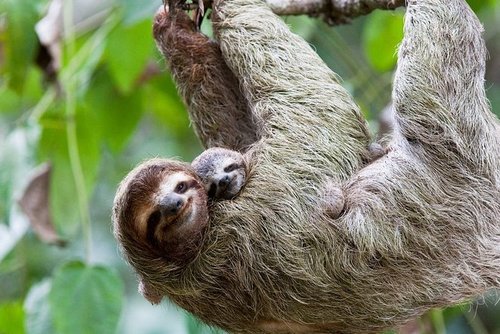The Amazon Conservation Project is situated on the fringe of Manú National Park – a UNESCO recognised biosphere reserve and World Heritage Site, only a short journey from the Inca capital of Cusco.
It is home to over 1000 species of birds, as well as larger wildlife including jaguar, puma, giant otter, giant anteater, giant armadillo, and both two-toed and three-toed sloth. There are also 14 species of monkey to be found here, including marmoset, capuchin, tamarin, squirrel monkey, spider monkey and woolly monkey species.
Volunteers this project are sure to have an unforgettable experience, playing an integral part in conservation research and sustainable community initiatives in the remarkable environment of Manu National Park.
Itinerary
Day 1
Arrive at Alejandro Velasco Astete International Airport, Cusco and transfer to temporary accommodation in Cusco. Spend the day acclimatising to the altitude and exploring the city.
Day 2
Orientation will take place in the morning, and volunteers will be registered and introduced.
Day 3
Transfer from Cusco accommodation to the cloud forest temporary accommodation. Enjoy an informative presentation about the next day’s events and the aims of the project.
Day 4
Visit a cocoa plantation on the way to the learning centre in Manu National Park where the project is based. Arrive, and settle into accommodation.
Day 5-8
Training period: Volunteers learn about the aims of the project and the conservation tasks, as well as how to live in the Amazon jungle safely. Education will also centre on indigenous species and how to recognise them. Training will be mainly field-based, but will also involve regular presentations.
Day 9
Final training day which includes an early morning bird walk where volunteers will be able to practice their auditory and visual identification skills.
Day 10-31
These days will be spent working on the project. Tasks will vary according to which of the smaller projects volunteers are assigned to day by day. There are usually morning and afternoon work-sessions, interspersed with meals and breaks.
Day 32
Return to Cusco and spend the night in a city hotel.
Day 33
Transfer to the airport for return flight, or commence independent travel plans.
Project Activities
On this project, you will get the chance to take part in a wide variety of exciting activities such as those described below:
Amphibian and Reptile Monitoring
Amphibians are excellent indicator species, as they are extremely vulnerable to any changes in their environment. Take part in transects of a 100m trail looking for amphibians and reptiles, potentially taking part in 'pitfall trapping' activities to capture the animals for study before releasing them back into the wild.
Avian Monitoring
This project's field site location is one of the best places in the world for bird watching activities. You will conduct early-morning transects along the reserve to listen and look out for birds.
Mammal Monitoring
To allow the project team to understand the importance of regenerating forest for mammal species, camera traps have been set up around the reserve to capture images of the mammals themselves. You may also find yourself tracking puma prints in your quest to monitor the Amazon's mammal populations effectively!
Butterfly Monitoring
Like reptiles and amphibians, butterflies are brilliant indicator species and are vital in pollinating the rainforest. You will help the project team to gently capture and identify butterflies in the area.
Biogardens
Join the project in their initiative to work alongside local mothers in their mission to combat malnutrition, providing resources and knowledge to build biogardens which will produce nutritious, fresh food for families - as well as an income via any surplus crops!
Reforestation
Help to create, plant, monitor and map reforestation plots. Volunteers have helped turn 17 hectares of degraded land into agroforestry plots which have enabled the planting of 10,000 plantains and 3,000 trees, and with your help, the team will be able to continue this impressive feat, reve3rsing the impact of logging and human disturbances.






